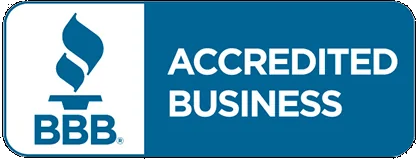USDA Loans
What is a USDA loan?
A USDA Rural Development home loan is a competitively priced mortgage option that helps to make purchasing a home more affordable for low-to-moderate income buyers looking to purchase in designated rural areas. The U.S. Department of Agriculture backs USDA loan programs in the same way the Department of Veterans Affairs backs VA loans for eligible individuals. If you're buying property in a rural area such as Westport or Dartmouth, MA, the USDA offers a no-money-down loan program.
The USDA loan is specifically available for rural properties only and was developed to encourage home purchases in rural areas. This loan is insured by the US Department of Agriculture and available to qualified individuals who are purchasing or refinancing their home loan in an area that is not considered a major metropolitan area by USDA.
What are the qualifications for a USDA loan?
In order to qualify for a USDA loan, you must meet certain requirements.
USDA loans have income limits based on the area's median income. These limits vary depending on the location and size of the household. Generally, the total household income of all household members 18 years of age and older cannot exceed 115% of the median income for your area as set by the USDA and the property must be located in an eligible rural area. Visit the USDA website to research the USDA income limit in your local area.
All credit documents must be within 120 days of the Note date.
Minimum FICO score of 620.
2-year work history with pay stubs or earnings statements for most recent 30 days; W-2 forms from the previous 2 years.
Single family home "primary residents" only (no rentals, 2-4 unit multi-family homes or investment properties).
Bankruptcy wait period is 3 years from discharge date.
Up to 6% seller contribution is allowed toward closing costs and can be financed into the loan amount up to 100% loan-to-value.
Massachusetts and Rhode Island properties must be considered "rural", which is generally defined as county with fewer than 10,000 people. You can determine if a property is eligible for financing through the USDA Rural Housing Loan program by entering the property address on the USDA website.
Are there a minimum payment requirements for a USDA Loan ?
If you live in Massachusetts and Rhode Island and are looking to purchase a home will find the USDA loan very attractive as it requires ZERO-down payment. In addition, the USDA Loan is the only other widely known zero-down payment option offered to residents who are not in the military (VA).
Here's a comparison of the minimum down payments required for the most popular loans:
Conventional Loans: 3% Down
FHA Loans: 3.5% Down
VA Loans: 0% Down
USDA Home Loans: 0% Down
What are the required documents for a USDA loan?
In order to qualify for a USDA loan to purchase your new home, you will need to provide certain documents to the USDA. These documents include proof of your income, asset, and employment information. If your doing a refinance, you will also need to provide documentation of your current mortgage payments, including your monthly mortgage statement and payment history. The USDA will use this information to determine if you are eligible for a rural development home loan.
When you apply for a USDA home loan, you will need to provide the following documents:
Your most recent 2 years tax return
Proof of income (pay stubs, W-2 forms, etc.)
Asset information (bank statements, investment account statements, etc.)
Employment information (letter of employment, pay stubs, etc.)
Proof of U.S. citizenship or legal residency
A credit report with a middle credit score of 620 or higher
A list of debts and monthly payments
Proof of homeowners insurance
An appraisal of the property you are buying
Copy of the sales contract
What is the USDA Guarantee Fee ?
USDA loans require mortgage insurance to protect the lender against potential defaults. There are two types of mortgage insurance associated with USDA loans: an "upfront guarantee fee" and an "annual" (monthly) fee. The upfront guarantee fee can be financed into the initial loan amount, while the annual fee is paid as part of the borrowers monthly mortgage payment.
The USDA "upfront guarantee fee" is a percentage of the loan amount that is added to your loan balance at time of close. This fee is not paid directly by the borrower but is instead included in the overall loan amount. The percentage charged, may change over time, so it's recommended to consult with Onshore Mortgage, LLC for the most up-to-date information. As of 01/01/2024 the upfront guarantee fee was 1.0% of the loan amount and a monthly (annual) fee of 0.35% of the loan amount. These fees apply to both home purchases and refinance transactions.
What is the difference between a USDA Direct and USDA Guaranteed Loans?
Explore two distinct home loan alternatives offered by the USDA:
USDA Guaranteed Loans: These loans involve the issuance of USDA loans through a lender, and Onshore Mortgage, LLC has lenders that specialize in structuring this type of USDA home loan.
USDA Direct Loans: Alternatively, a USDA home loan can be directly issued by the USDA. While the direct route may seem straightforward, it comes with certain restrictions. Eligibility for this option is often limited to individuals with very-low income who face challenges obtaining financing elsewhere. Onshore Mortgage cannot facilitate this loan option.
How to apply for a USDA loan?
To apply for a USDA home loan, you will need to submit your USDA loan application through Onshore Mortgage, LLC. You will also need to provide proof of your income, asset, and employment information. The USDA will review your application and determine if you are eligible for a rural development home loan.
The USDA home loan program is a great option for rural homeowners looking to purchase a home with no money down. If you're considering a USDA home loan, be sure to contact Onshore Mortgage to learn more about the process and how to qualify.
*Credit and income restrictions do apply. Please visit our Disclosures page for a detailed breakdown of all loan types.

.webp)

